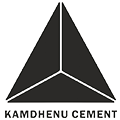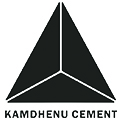Cement is a crucial aspect of the construction industry. Its traces from ancient civilization proved that it has been in application for many centuries. From small constructions to historical architecture, cement is a main component of building structures. It is a binding agent that is used in binding all the material to form a mixture that is used in construction. Cement provides a strong foundation for building construction. It provides strength and durability to the structure. It is resistant to climate change and gives stiffness to the building even in natural disasters including earthquakes and floods. It is affordable and easily available material. It also gives a smooth finish to the building structure. It is considered a backbone of a strong structure and a versatile material that has a wide range of applications.
Cement is a necessary fundamental material that has various applications in different construction projects. It is a versatile material that provides strength, durability, longevity, stability, cost-effectiveness, sustainability, and a great finished appearance to a constructed structure. Anyhow, There are different types of cement used in different types of applications. Cement is a basic component used globally but it has several types whose application depends on the project. There are several types of cement including Ordinary Portland cement(OPC), Rapid Hardening Cement, Portland Pozzolana Cement (PPC), Sulphate Resistant Cement, White Cement, and Low Heat Cement.
In this blog, we are discussing “what is the difference between Ordinary Portland Cement (OPC) and Portland Pozzolana Cement(PPC)”.
What is Ordinary Portland Cement?
OPC is an ordinary Portland cement that is most widely used in construction. It is used for its high compressive strength. It allows itself to easily condense and compact. It is a composition of limestone, clay, and gypsum which on heating produce a fine powder known as clinker. The clinker on further processing forms a fine grayish powder that is used as a binding agent to build construction. The capacity of remaining undamaged with excessive loads is a major characteristic of ordinary Portland cement. It is used in general construction projects. It is used in building ceilings, roofs, floors, and building foundations. It has high adhesive efficiency as it quickly settles on the surface.
OPC, ordinary Portland cement is further classified into three grades based on its compressive strength. It has three grades and has different applications depending on the construction types. First is OPC 33 Grade Cement. This has a strength of 33 Mega Pascal. It is used in general construction where heavy loads are not in stand. Second is OPC 43 Grade Cement. As its name suggests, it has a compressive strength of 43 Mega Pascal. It has relatively higher strength than OPC 33-grade cement. It is used in constructing structures where the load is a little bit heavy such as bridges, and dams. Finally, the third type is OPC 53 Grade Cement which has the highest compressive strength among all of them. It has 53 Mega Pascal measured strength. It is used in the construction of high-rise buildings, expressways, and structures that need to withstand regular heavy loads.
What is Portland Pozzolana Cement?
Portland Pozzolana Cement (PPC) is a type of cement that is globally used in the construction industry. It is made up of fly ashes, volcanic ashes, and silica fumes blending with portland clinker at high temperatures. It has a wide range of applications. It is resistant to thermal energy. It produces less heat than other types in the process of curing. It prevents cracking and damage to building construction. It also has three grades based on its strength. PPC 33 Grade Cement has a compressive strength of 33 Mega Pascal, PPC 43 Grade Cement has a compressive strength of 43 Mega Pascal whereas PPC 53 Grade Cement has a strength measured 53 Mega Pascal. It is made of high-strength concrete to ensure a strong foundation for the building.
How are they different from one another?
When it comes to construction, choosing the right type of cement is critical to ensuring the quality and durability of the finished structure. Two commonly used types of cement are OPC and PPC cement. While both types have their advantages and disadvantages, there are some key differences between the two that are important to understand.
-
Compressive strength:
The capacity to combat the excessive load in any structure is known as compressive strength. Ordinary Portland Cement (OPC) has more compressive strength than Portland Pozzolana Cement(PPC). OPC 53 Grade Cement has higher efficiency than PPC 53 Grade Cement after the same period.
-
Adhesive Efficiency:
Ordinary Portland Cement (OPC) has faster adhesive efficiency than Portland Pozzolana Cement(PPC). It settles down more quickly than PPC cement. It takes less than an hour for proper adhesion and drying. This means that it may require more water to be added during mixing to ensure it remains workable.
-
Raw Material composition:
The composition of Ordinary Portland Cement (OPC) is consisting of limestone, gypsum, and clay mixed with clinker to form a fine powder while Portland Pozzolana Cement(PPC) is composed of Portland cement with pozzolanic raw materials like fly ash, volcanic ash, or silica fumes blended with clinker to give a fine dry powder for construction use.
-
Heat of hydration:
When water comes into contact with cement, it generates heat which is known as the heat of hydration of the cement. Portland Pozzolana Cement(PPC) has lower heat of hydration than Ordinary Portland Cement (OPC). That means it helps to prevent cracking and any kind of damage to the building structures.
-
Cost-effectiveness:
Ordinary Portland Cement (OPC) is more expensive than Portland Pozzolana Cement(PPC). OPC consists of gypsum which is expensive raw material while PPC is composed of pozzolanic raw materials like fly ashes, silica fumes, etc which make it cost-effective and affordable.
Conclusion
Selecting a type of cement is an important decision. It forms the whole productivity and efficiency of the constructing structure. Whether to choose PPC or OPC, depends upon the kind of project and application placed. Both have their classification and benefits. However, it is also important to choose the appropriate grade of cement for a specific construction project to ensure its success and longevity. Additionally, steps should be taken to manage the heat of hydration during the curing process and reduce the environmental impact of its production. The quality of the material determines the durability of the building structure.


